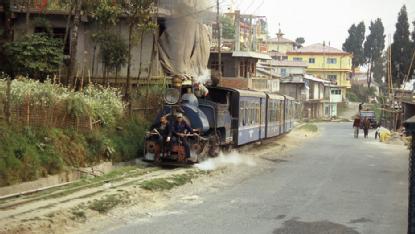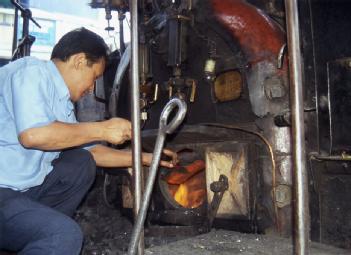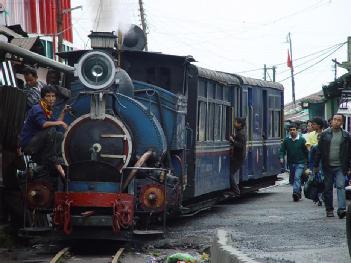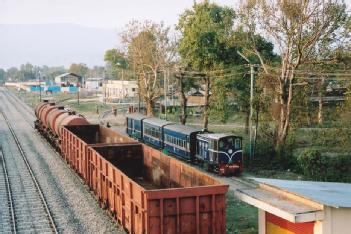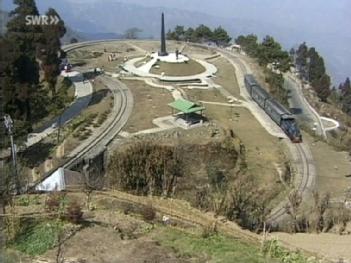
Darjeeling Himalayan Railway |
734001 Siliguri, India (West Bengal) |
|
| Address |
Siliguri Junction railway station
Hill Cart Road |
| Floor area | unfortunately not known yet |
Railway
- World Heritage Site
|
Opening times
|
see: dhrs.org/pdf/Travelinformation.pdf | ||||
|
Status from 09/2014
|
We don't know the fees. | ||||
| Contact |
|
||||
| Homepage |
www.dhr.indianrailways.gov.in www.dhrs.org |
||||
| Location / Directions |
New Jalpaiguri is a railway station in Siliguri in Jalpaiguri district in the Indian state of West Bengal which serves the Indian twin cities of Jalpaiguri and Siliguri. Siliguri Junction is one of the three railway stations that serve Siliguri in Darjeeling district in the Indian state of West Bengal. The other two stations are: Siliguri Town and New Jalpaiguri. Darjeeling is a town in the Indian state of West Bengal. It is located in the Mahabharat Range or Lesser Himalaya at an average elevation of 6,710 ft (2,045.2 m) The Darjeeling Himalayan Railway connects the town with the plains and has one of the few steam locomotives still in service in India. |
| Description | The Darjeeling Himalayan Railway is a 2 ft (610 mm) narrow gauge railway that runs between New Jalpaiguri and Darjeeling in the Indian state of West Bengal, India. The routeThe railway line basically follows the Hill Cart Road which is partially the same as National Highway 55. Usually, the track is simply on the road side. In case of landslides both track and road might be affected. As long parts of the road are flanked with buildings, the railway line often rather resembles urban tramway tracks than an overland line. Loops and Z-Reverses (or "zig-zag"s)One of the main difficulties faced by the DHR was the steepness of the climb. Features called loops and Z-Reverses were designed as an integral part of the system at different points along the route to achieve a comfortable gradient for the stretches in between them. When the train moves forwards, reverses and then moves forward again, climbing a slope each time while doing so, it gains height along the side of the hill. LocomotivesSteam |
[dsp_museum_detail.cfm]
| Data Compliance | More Information |
